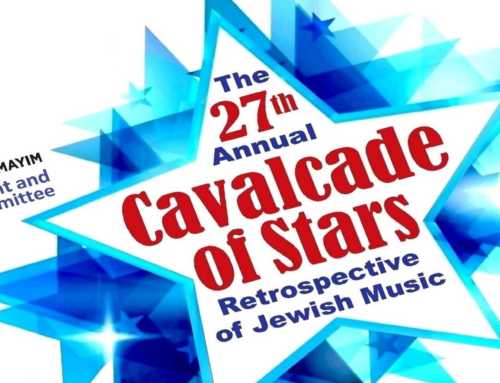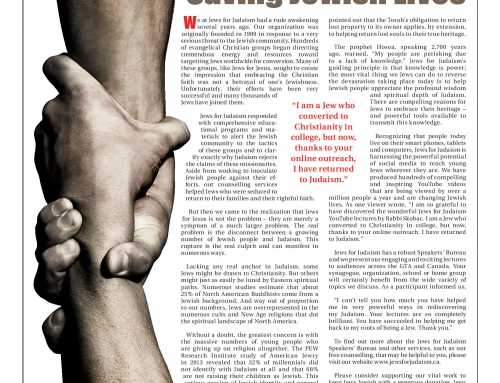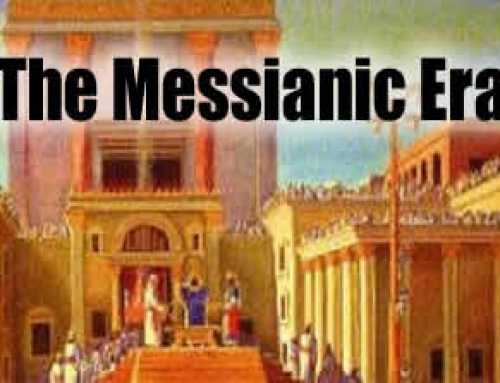- The image above, from a Christian missionary publication entitled “Truth from the Tenach”, reflects how deceptive missionaries can be in their attempt to camouflage themselves as traditional Jews. How many inaccuracies can you spot in the photo?
Analysis of a missionary forgery:
Missionaries frequently use deceptive means to ensnare unsuspecting Jews into the Christian faith. Recently, in the USA and Canada, missionaries have posed as Orthodox Jews and infiltrated synagogues.
A Canadian missionary group used this photo for the cover of its pamphlet “Truth from the Tenach” to convince prospective converts of its Jewish authenticity.
To the untrained eye, the character may appear to be an authentic Orthodox, Chasidic Jew. But looks can be deceiving.
There are numerous clues that this image is not really what it appears to be. Can you describe the numbered inaccuracies in the photo?
1. The man in this photo with payot (side curls) and kippa (skull cap) is supposed to appear to be an Orthodox Jew.
2. However, his real side hair, which is supposed to be the source of the payot, is tucked behind his ear, while fake payot are wrapped over his ear.
3. This person seems to have a fake beard.
4. The grey beard and payot do not match the blond hair on the side of his head
5. A traditional Orthodox Jew with payot and long beard would have very short-cut hair on his head. This imposter, however, has very long hair and bangs coming down to his eye brows.
6. An Orthodox Jew with payot would not be wearing a small blue kippa with silver embroidery. Rather, he would be wearing a large black velvet one covering a significant part of his head.
7. If this person were a sofer (scribe) as he pretends to be, he would not be using a fountain pen or ball-point pen. Scribes in Judaism only use a quill from a turkey feather or reed.
8. A real scribe would only be working with parchment made from a kosher animal hide. Instead, this scribe is writing on a criss-crossed papyrus parchment of plant origin.
9. When a scribe writes on parchment, he writes with the parchment rolled side to side, not top to bottom, as this fake scribe is doing.
10. A scribe would not be writing on the tiny corner of a table, but would have a proper work station to lay out the parchment.
11. If there was any reason for the scribe to have a candle while writing his holy text, the candle would be burning, not extinguished.
12. A real scribe would have an overhead lamp for illumination to ensure accuracy. In this photo, the “scribe” is illuminated from the left side, and a shadow falls under his hand. This obscures his ability to clearly see the letters he is supposedly writing.
13. While the impression is that this “scribe” has holy books on the table, upon close examination of the spines, they are clearly not Jewish volumes.
14. This “scribe” has a yad (pointer) used for reading from a Torah scroll, placed on the “holy” books in front of him. A real scribe would not place any object on top of holy books.
If you have any questions, contact Jews for Judaism at toronto@jewsforjudaism.ca
Thank you.





